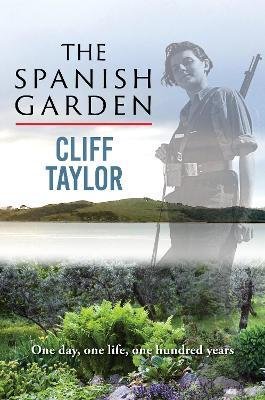Review: The Spanish Garden
Reviewed by Dan Rabarts
Author:
Cliff Taylor
Publisher:
Quentin Wilson Publishing
ISBN:
9781991103116
Date Published:
11 May
Pages:
256
Format:
Paperback
RRP:
$37.50
All books bought via this link help us to review more books from Aotearoa — thank you for supporting local books and authors
With the tagline “One day, one life, one hundred years” Cliff Taylor’s The Spanish Garden sets itself the ambitious task of telling a story that spans a lifetime, against a backdrop of the upheavals and political zeitgeist of the 20th century, framed within the dawn and dusk of a single day.
The tale of Sidney King, The Spanish Garden’s protagonist,is one of intensely personal challenges, discovery and obsession, love and loss, seen through a series of ever more fractured, smoky lenses, which become murkier the more the years go by. It asks the reader to consider how those things which were so clear to us in our youth - our passions and convictions - when tested and tainted by life, might leave us at the end of our days facing someone in the mirror who barely resembles what we ever wanted to become.
On his 100th birthday, Sidney sometimes reminisces, sometimes drifts, through the past and everything that has shaped him, and the people who have come and gone throughout his life. As a privileged young man, with idealistic notions at odds with his father’s capitalistic leanings, when the chance arose to travel to Spain in 1936 and compete in a swimming competition intended to raise a solid middle finger to the fascist regime in Germany, Sidney could not resist the opportunity.
But the tide of history went against him and he found himself at the front lines of a civil war, snared in a web woven of his own determination to live his ideals, and the clutches of desire. It is the memory of Elena Pujol, the anarchist soldier who captured his heart in Barcelona, that followed him from war-torn Europe back to Aotearoa a decade later. Nothing was left untouched by the conflicts in Europe while New Zealand was not the place Sidney left behind. Cast out by family and friends alike, Sidney retreated from the world but the world would not retreat from him.
Treading the path less travelled by focusing on the Spanish Civil War, rather than WWII, and New Zealand’s part in it provides a refreshing change as well as a soul-searching counterpoint for the reader. It is interesting to reflect on the alternative reality and how the industrial climate and conflicts of our own country throughout the 20th century may have led to changed outcomes had conditions and events led us to take a different path. Rooted in the class struggles and pervasive racism of 20th century Aotearoa, alongside the horrors of the wars in Europe, the novel threads a crooked needle through our social fabric where love might be some sort of salvation, if only we can find it and hold onto it.
The Spanish Garden is a story of choice and consequence, of loss and the (possible) futility of hope, of how powerless we can be under the weight of the world—or at least humanity. Confusion haunts the narrative like ghosts creeping through broken memories. Yet, despite all this, there is a flicker of hope: Love, however unlikely, might persist across the darkness, lighting up those voids in unexpected and sometimes beautiful, if heart-breaking, ways.
With all these elements at work, Taylor strikes awfully close to the mark in terms of the novel’s ambitious goals, drawing the wide scope of the world he has explored mostly down into the perspective of one broken man at the end of his days. The story presents feints and deviations along the way, as a life that spans a century surely must, yet the puzzle pieces draw together into something which is at once complete and yet unresolved, cohesive yet murky, falling towards the inevitable, foreshadowed conclusion waiting in the soft mud and dark water of the Kaipara harbour.
At once a history lesson and a love story which does indeed span “One day, one life, one hundred years,” Taylor has given us a fresh and insightful yet harrowing vision of how the world can shape, make and break a soul. It is a vision which will stay with the reader long after the last page is read.
Reviewed by Dan Rabarts


